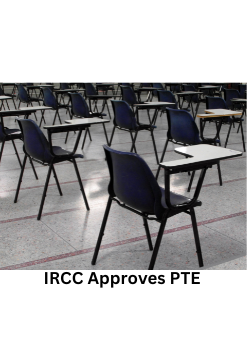What Is The Task?
You will be given a diagram representing a particular process, with its various parts described using labels. Your task is to summarize the information in at least 150 words. You are advised to spend about 20 minutes on this task.
The purpose of the task is to test your ability to comprehend information visually presented and communicate the information through writing, with grading based on task response, coherence and cohesion, lexical resource/vocabulary, and grammar. If still not sure what the task is, you can opt for IELTS Classroom Training from Hurray
How To Do The Task?
With IELTS, time management is a must, in order to complete the entire exam successfully. The writing tasks tend to take a lot of time – so pay close attention to our recommended time for each part of the task.
-
Before you can begin to communicate, the first step is to comprehend the given information. Examine the diagram, and read the labels – do you understand what the process represented is? Based on the kind of process depicted, there may be a fixed step-by-step order that you should follow, as though you are reading a page; other processes may not have such an order, with you having to take in the whole process at once. Spend about 5 minutes or less on this part of the task.
-
Next, using a rough sheet, make a plan for what you will write – structure the ideas you want to cover in a particular order. This will make it easier for you to write in a smooth flow on your main sheet.
-
A good structure to follow would be as follows:
-
The name of the process
-
Each component of the process in the order it has been depicted in
Or
Each component in an order that makes sense to you, either in terms of a particular direction e.g. top to bottom, or in an order according to which you think the process would logically work
-
Write the above in single words or phrases which you can pick up and expand in the main sheet. You can also connect ideas that you want to write about together.
-
Spend about 5 minutes or less on this part of the task.
-
Next, it’s time to write up what you’ve planned – take up each word or phrase and expand on it into full sentences. These are a few sample sentences that you will find helpful, especially in terms of beginning and ending your summary:
-
Beginning: “The diagram depicts the process involved in...” or “The diagram is a representation of the process of...”
-
Ending: “Finally, the process of ________ ends with...” or “The last step is ________, with which the process of ________ is completed.”
-
Spend about 7-8 minutes on this part of the task, with the remaining 2-3 minutes on revision.
-
Do not skip out on the last step of revision – during the process of writing, it is very common to make a few small mistakes, especially with regard to spelling or grammar. You can save a few points by taking the time to carefully read what you write.
What To Watch Out For?
The components of the grading process are task response, coherence and cohesion, vocabulary, and grammar – and each of them require some work to develop. We’ve already covered a list of tips for this in our blog post on “Grading the writing test” – so go check that out!
Final tips
-
If you’ve read a couple of our blog posts you’d know that the advice we give to tackle IELTS is to read as much as you can. Once you see how people write – in no time you’ll be writing well like them!
-
Besides time-limit, word-limit is also very important – the prescribed word limit is 150 words. The purpose of the word limit is to make sure that you write enough to make your reader understand the diagram properly – but not so much that you give unnecessary or repetitive information. You need not try to make it exactly 150 words – but try not to write less than 140 words, or more than 160.
-
But, you must not try to count every word you’ve written – you will waste precious time! Instead, learn how many words you are able to write on one line, and thus how many lines you’d be writing for 150 words. For instance, if you write about 9-10 words a line, you probably will have written enough in 15 lines.
Finally, the old saying “practice makes perfect” is especially relevant when it comes to this task – or the entire IELTS exam for that matter. However, practice under professional guidance is arguably even more useful – which is where we at Hurray come in!
Hurray is well known for IELTS Coaching In Bangalore. To learn to ace this and other tasks, get in touch with us via email: info@hurrayedutech.com or phone: 8971357938.











Post Comments